Pages 208-212
A History of the County of Sussex: Volume 7, the Rape of Lewes. Originally published by Victoria County History, London, 1940.
This free content was digitised by double rekeying. All rights reserved.
In this section
POYNINGS
Punninges (xiii cent.); Ponynges (xiv-xvi cent.).
The parish of Poynings—the name is pronounced Punnings—covers a rectangle, 3 miles in length and averaging ¾ mile in width, lying due north and south, between the parishes of Fulking and Newtimber, and covering 1,642 acres. The south of the parish is all Downland and sheep-pasture, but the northern half is agricultural land, farmed from Poynings Grange Farm. South of the village a deep coombe, known as the Devil's Dyke, cuts into the escarpment, sweeping round towards the west and almost isolating a 700-ft.-high hilltop known as the Dyke Hill, which is surmounted by an Early Iron Age fortified town of considerable size. The neck of the promontory is crossed by a deep ditch with a strong rampart within it, and the end of the spur, 3 furlongs away, is similarly protected; the flanks are protected with weaker defences. The lateral ramparts are about a furlong apart, and the town extended over about 30 acres. The Downs to the west of the town are covered with the fields of the ancient inhabitants, (fn. 1) whose water-supply appears to have been the spring at the foot of the Dyke coombe. A bostal slants down the south side of this from fields to spring, and this route is supposed to have later formed part of the route of a Roman road across the Downs at this point. (fn. 2) A golf course has now been laid out over the old field-sites, and a hotel built within the ramparts of the ancient hill-town.
The village of Poynings lies at the mouth of the coombe, having apparently been founded on the stream which flows thence and still works a mill at the northern end of the village. Most of the cottages are, however, along the road leaving the centre of the village westwards towards Fulking, although there are also a few scattered cottages round the mill. The population in 1931 was 300. The early medieval fields appear to have been east of the village, where lynchets of this period may yet be seen. Close under these, adjoining a modern farm-house, are the remains of the manor-house, known as Poynings Place. This was destroyed by fire in 1727, the ruins eventually collapsing about 1823. (fn. 3) The sole remains visible to-day are some shapeless fragments of flint walling with brick dressings, apparently of the 16th century, one of them containing the remains of a fire-place. A few medieval moulded stones may be seen lying in the farm-house garden. The Roman road down the Devil's Dyke is believed to pass just east of the site of the manor-house.
Manors
The manor of POYNINGS was probably identical with 8 hides held in 1086 of William de Warenne by William son of Rainald, (fn. 4) who may be identified with Rainald de Poynings son of Reiner. (fn. 5)
The overlordship descended with the rape, falling to Elizabeth, Lady Bergavenny, in 1439. (fn. 6) By the middle of the 16th century the manor had ceased to be held of the barony of Lewes and was held directly of the king. (fn. 7) Adam de Poynings and his wife Beatrice were holding land at Poynings about 1140. (fn. 8) They had a son Adam. (fn. 9) In 1242–3 Thomas de Poynings held Poynings and its members as 10 knights' fees, (fn. 10) and was succeeded by his son Luke, who was holding Poynings in 1284–5, (fn. 11) and died in 1294. (fn. 12) Michael son and heir of Luke died in 1316, in which year his widow Margery was holding Poynings. (fn. 13) In 1339 Thomas, Michael's heir and first holder of the barony of Poynings, created in 1337, died seised of the manor, which descended to his son Michael, (fn. 14) who died in March 1369. (fn. 15) His widow Joan held the manor as dower till her death a few months later, (fn. 16) and it passed subsequently to her son Thomas who died in 1375 having settled the manor on his wife Blanche for life. (fn. 17) It does not, however, appear among her possessions at her death in 1409. (fn. 18) Thomas's heir was his young brother Richard, (fn. 19) who held the manor until 1387. (fn. 20) His widow Isabel held ⅓ as her dower until her death in 1394. (fn. 21) Richard's son Robert died in 1446, (fn. 22) and since his only son Richard had died in 1430, (fn. 23) the manor passed to Richard's daughter Eleanor, wife of Henry Percy son and heir of Henry Percy, Earl of Northumberland. (fn. 24) Subsequently the lordship of Poynings became merged in the earldom of Northumberland. Eleanor died in 1484 (fn. 25) and her son Henry Percy the 4th earl, who died in 1489, (fn. 26) bequeathed the manor and lordship of Poynings to his youngest son Josceline 'to the intent that the said Gosslyne shall be of loving and lowly disposition towards the said Henry his [eldest] brother and give him his allegiance'. (fn. 27) In 1514, however, the manor was conveyed by Henry, Earl of Northumberland, and his wife Katherine to trustees, (fn. 28) and in 1523 the same earl leased it to George Gyfford for 21 years, for £56 a year. (fn. 29) This lease was confirmed and extended for 5 years by the next earl, Henry, in 1527. (fn. 30) In 1531 this Henry, 5th Earl of Northumberland, appears to have mortgaged the estate to Sir Edward Seymour (fn. 31) and in 1535 conveyed it to trustees for the use of the king, (fn. 32) who in June 1536 appointed Sir Nicholas Carew as chief steward, receiver, and surveyor there. (fn. 33) In December 1537 the king granted the reversion of the manor to Sir Anthony Browne and his wife Alice, with remainder to his heirs male, Browne having come to some agreement with Carew before the attainder of the latter. (fn. 34) Browne died in 1548 holding the manor. (fn. 35) His eldest son and heir Anthony Browne, owner of Battle Abbey and Cowdray Park, was created Viscount Montagu in 1554, and the estate descended in the family until the death, without heirs, of Mark Anthony Browne, 9th viscount, in 1797, when Poynings reverted to the Crown. (fn. 36) Elizabeth Mary Browne, sister of the 8th viscount, married William Stephen Poyntz, (fn. 37) and in 1804 they were granted a 31 years' lease of the manor. (fn. 38) On the lapse of this lease the Crown resumed the manor and in default of an heir administered it through the Office of Works. (fn. 39) It is still the property of the Crown.
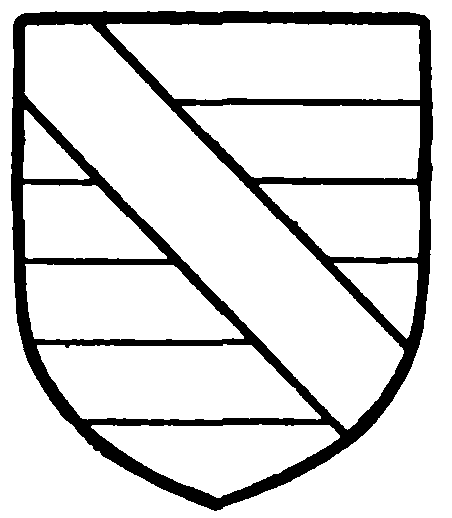
Poynings. Barry or and vert a bend gules.
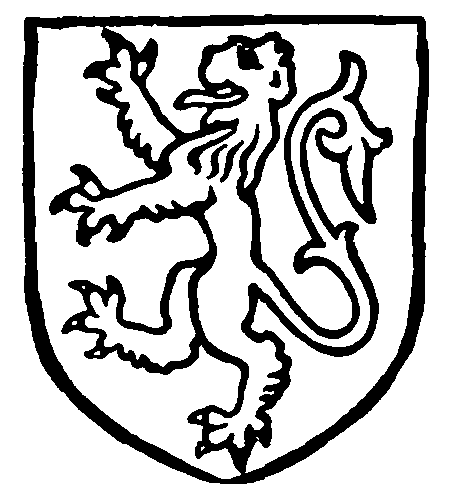
Percy. Or a lion azure.
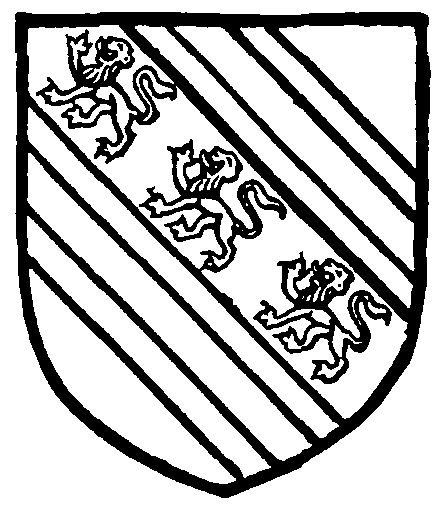
Browne. Sable three lions passant bendwise between double cotises argent.
There was a PARK pertaining to the manor of Poynings at least as early as 1339. (fn. 40) It appears to have descended with the manor, and in 1387 John Wymbissh, one of the yeomen of the king's chamber, was appointed to the custody of it during the minority of Robert, Lord Poynings. (fn. 41)
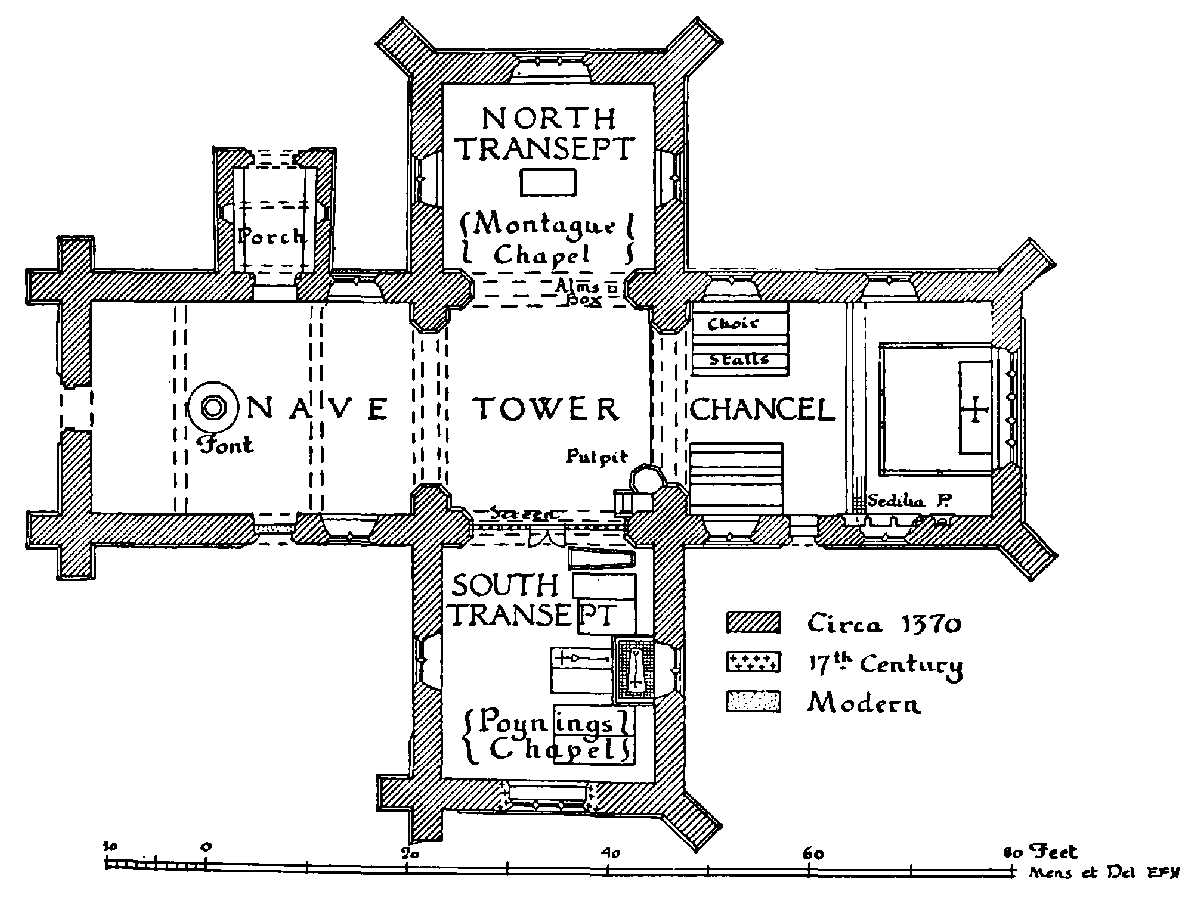
PARISH CHURCH of HOLY TRINITY POYNINGS
There were two mills at Poynings in 1086 (fn. 42) and in 1339; (fn. 43) and in 1369 it was noted that they were idle in the summer for want of water. (fn. 44)
Church
The parish church of the HOLY TRINITY, (fn. 45) which is mentioned in Domesday Book, stands on the hill-side at the mouth of the Devil's Dyke coombe. The building was practically entirely reconstructed by Thomas de Poynings and his brother Richard about 1370, and remains to-day very much as left by them. On plan it is cruciform, with a central tower. There are no aisles, but the nave has a contemporary north porch. The material is flint rubble with stone dressings.
The angles all have buttresses, those to the north transept and chancel being diagonal, as is also the eastern buttress of the south transept. The remaining buttresses are in pairs. The west window of the nave is three-light, with a traceried head in a style approaching that of the 15th century, having vertical super-lights, with trefoiled heads to match the main lights, and simple spandrels. Below it is the west door, which has a simple pointed arch with no imposts and a compound moulding carried all round it. There is a hood-moulding. The north and south doorways of the nave are similar, but the former has a more elaborate moulding passing round it. The south doorway is now blocked. The nave has a window on either side, immediately east of the doorway, each consisting of two lights with trefoiled ogee heads and two super-lights, in the same style as the west window. There is a head-mould with horizontal stops. Two-light windows of this description exist on either side of each arm of the church, the chancel having two in each of its side walls. The north window of the transept is similar to the west window of the nave already described. The south transept window is of 17th-century date, having three uncusped lights, their springing-line marked by small octagonal caps of pseudo-Classical design. The pointed head of the window is filled with reticulated tracery without cusps. This window, the only inserted feature in the church, was brought from Chichester Cathedral at the middle of the last century. The east window is a large five-light of almost 15th-century type, with lofty vertical super-lights, trefoil-headed to match the main lights, under a tall pointed head. At the head of the centre main light is a small sex-foil, and another occurs at the apex of the window. There is a hood-mould, above which is a stone shield carved with the Poynings arms: barry of six (or and vert) a bend (gules). At the apex of the chancel gable is a small quatrefoiled aperture. Between the two windows on the south side of the chancel is a small priest's doorway with a simple wave moulding passing around jambs and pointed head, and a hood-mould. The central tower is plain and unbuttressed. It has an embattled parapet concealing the roof, the belfry stage is lit by a small trefoilheaded light in each wall, and the ringing-floor has a similar light to north and south, placed out of centre to clear the transept roofs. The porch doorway has a simple pointed arch without imposts, and a heavy moulding passing around it on both the external and interior faces. In the porch gable is a stone shield bearing the Poynings arms. The hood-mould over the arch is continued at springing-level along the gable wall of the porch.
The interior masonry of the church is almost featureless except for the arches of the crossing. These rise from semi-octagonal responds with simple ogee-splayed bases, and caps with scroll-roll abaci and necking and a simple unornamented bell. The arches are in two orders with plain chamfers. The south-east window of the chancel is raised to accommodate the sedilia and piscina. The former is triple, with the seats all on the same level under trefoiled ogee heads, rather debased to suit the rectangular frame in which all three are inclosed. The piscina is similar in style, although not joined, to the sedilia, and has a credence-shelf. There is another small piscina in the south transept. The roofs of this church have been much restored. That of the south transept had been lowered at some period, being restored to its original height in 1903. In this transept is part of a tie-beam inscribed 'Francis Killingbecke, 1625', which may refer to the date when the roof was lowered. The nave roof was restored in 1926.
The south transept is known as the Poynings Chapel, and is inclosed by a good oak screen, apparently contemporary with the church, which may have originally been the rood-screen in the eastern arch of the crossing. It is in excellent condition, with a central double door and four side bays, the lower portions of which are solid and the upper each divided into three lights with elaborately foliated heads. The base of the altar remains in the chapel, which may be on the site of the chancel of the earlier church, (fn. 46) as the east wall suggests a 13th-century date and shows on its exterior face the jamb of a window, apparently part of a couplet of large lancets. This wall is the only one in the church which has no plinth and is not properly faced with knapped flints.
The altar base is paved with 13th-century encaustic tiles, in which is set a contemporary tomb-slab said to have been found in the churchyard. West of this is a series of old tomb-slabs, apparently in their original positions. (fn. 47) The northernmost is a good hogbacked slab with a foliated cross, raised on a low tomb but now broken into fragments. Next to it is a flat slab which shows signs of having had a very elaborate heraldic brass upon it. One tomb has a carved foliated cross and a matrix for a shield and has a border containing an incised inscription in Lombardic characters commemorating the 'Damette de Bissel'. In the north transept flooring is a tomb-slab having a matrix for what appears to be a calvary.
The altar in the chancel is inclosed on three sides by balustered rails of mid-17th-century date, west of which may be seen some 13th-century encaustic tiles, some of them heraldic, laid in the modern flooring. The pulpit dates from about 1600. It has lost its sounding board, but the back, with two caryatid figures, remains. The chancel pewing seems partly of this period. The west door has the carved date 1608. The font is of unusual form, being a plain octagonal prism with trefoiled ogee-headed panels around the base but a perfectly plain upper part.
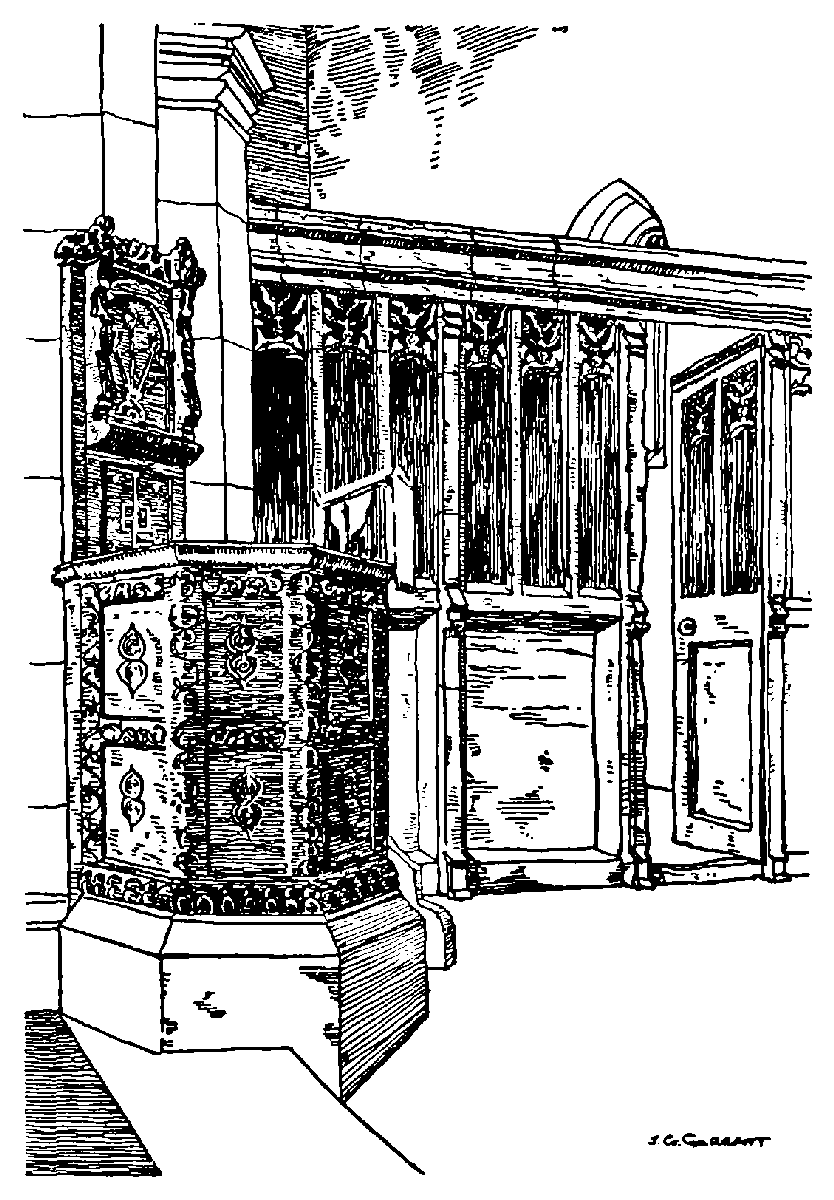
Poynings Church: the Pulpit and Screen
The tower contains one bell of early-14th-century date, cast by Richard de Wimbis, and another dated 1715. (fn. 48)
The church possesses a communion cup bearing the mark for 1567, with paten cover; and a paten and flagon both of 1884. (fn. 49)
The registers date from 1558.
Advowson
There was a church in Poynings in 1086. (fn. 50) It was granted to the Priory of St. Pancras at Lewes, and in about 1095 William II Earl Warenne confirmed this grant. (fn. 51) A further confirmation in about 1140 covered church and tithes, which were said to have been granted by Adam de Poynings, his wife Beatrice, and their son Adam. (fn. 52) The advowson was, however, held with the manor at least from 1339. (fn. 53) Henry, Earl of Northumberland, was holding it in 1514, (fn. 54) and it appears to have passed with the manor to the Crown in 1535. (fn. 55) From 1554 the patronage remained with the Viscounts Montagu, but as they adhered to the Roman Church the actual presentations were often made by their assigns. (fn. 56) By 1807 the advowson was in the hands of the Crown, (fn. 57) and it is still in the gift of the Lord Chancellor. (fn. 58)
The CHANTRY OF ST. MARY was founded by one of the Poynings family in about 1375 in the south transept of the parish church, where it stood in 1585. At that date there pertained to the chantry 5 acres in the parish of Poynings and lands in Pyecombe containing 5 closes, 100½ sheep leases, and 6 cow leases. The profits then were remembered to have always belonged to the parson (fn. 59) of Poynings, but a witness who had known the parish of Poynings for 60 years deposed that he did not remember any masses being read in the chantry aisle. (fn. 60) In 1834 the estate of the chantry in Pyecombe was estimated at 70 acres. (fn. 61) The advowson of the chantry was held in dower by Isabel widow of Sir Richard de Poynings until her death in 1394, (fn. 62) and descended with the manor.


